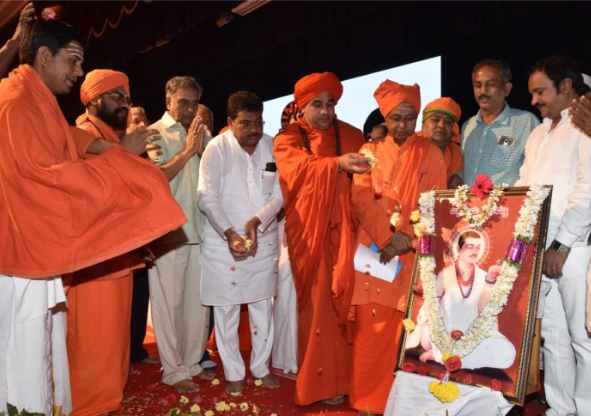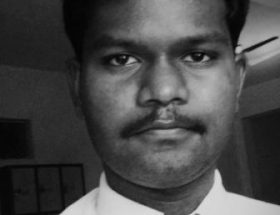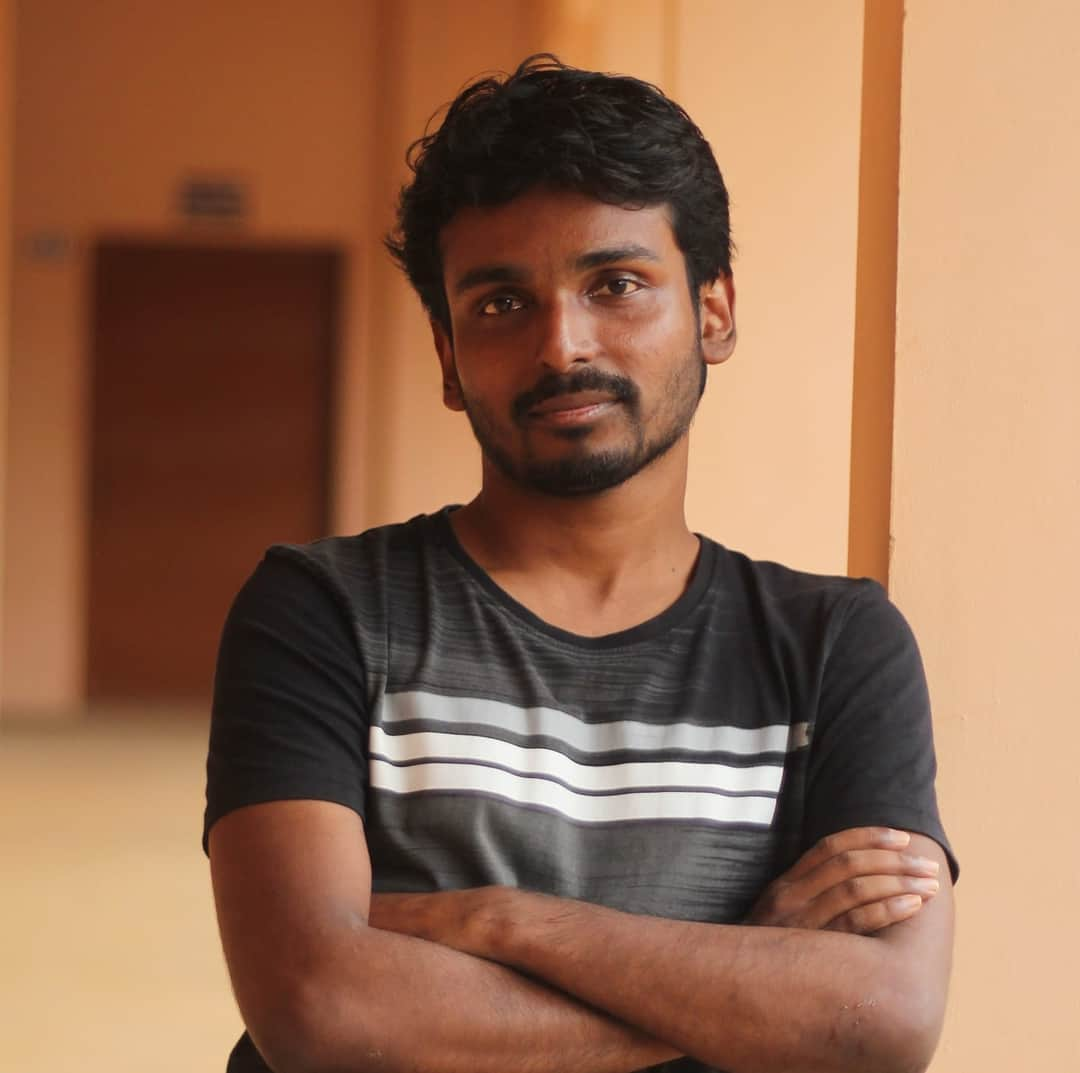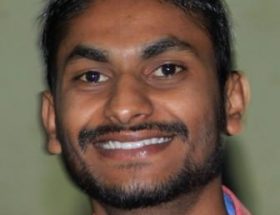Trading pearls for sand[i]: BJP and the Panchamasali reservation struggle
ಛಲಬೇಕುಶರಣಂಗೆ, ಪರಧನವನೊಲ್ಲೆನೆಂಬ;
ಛಲಬೇಕುಶರಣಂಗೆ, ಪರಸತಿಯನೊಲ್ಲೆನೆಂಬ;
ಛಲಬೇಕುಶರಣಂಗೆ, ಪರದೈವವನೊಲ್ಲೆನೆಂಬ;
ಛಲಬೇಕುಶರಣಂಗೆ, ಲಿಂಗಜಂಗಮಒಂದೇಎಂಬ;
ಛಲಬೇಕುಶರಣಂಗೆ, ಪ್ರಸಾದದಿಟವೆಂಬ;
ಛಲವಿಲ್ಲದವರಮೆಚ್ಚನಮ್ಮಕೂಡಲಸಂಗಮದೇವ.
Fortitude is needed for the Sharana (devotee) to declare: “I don’t want another’s wealth”
Fortitude is needed for the Sharana to declare: “I don’t desire another’s wife”
Fortitude is needed for the Sharana to declare: “I will not believe in another god”
Fortitude is needed for the Sharana to declare: “The Linga and the Jangama are but one”
Fortitude is needed for the Sharana to say, “Truth inheres in the prasada”
Our lord of the meeting riverswill never approve of those without fortitude.
(A vachana or pithy composition by Basavanna. Translation mine)
The new year has put new hurdles in the gameplan of the BJP government in Karnataka. Sri Basavajaya Mrutyunjaya Swamiji of the Kudalasangama Panchamasali Peetha, who is leading the agitation by the influential Lingayat Panchamasali community to be moved from 3B to the 2A reservation category for OBCs, rejected the state government’s proposal to house the community in the newly created 2D category instead. Noting that the new category did not come with any clarity on the reservation quota that would be made available to the community, the seer added that Panchamasalis were aggrieved with the turn of events and would teach the saffron party a lesson in the coming election.[ii]
The rejection of the government’s proposal constitutes the latest reservation-related crisis staring the party in the face as Karnataka gets ready to go to the polls. Even though the BJP government tabled a bill on Dec. 20, 2022, to increase the reservation for Scheduled Castes from 15 to 17 percent and for Scheduled Tribes from 3 to 7 percent as recommended by the Nagmohandas Commission, it has drawn the ire of Dalit organisations for failing to implement the Justice Sadashiva Commission Report to provide internal reservation for SC and ST communities.[iii]Then there is the long-standing demand of the numerically strong Kurubas, Kadu Gollas, and Kabbaligas to be moved to the ST list. Taking their cue from the Lingayat Panchamsali agitation, Vokkaliga legislators have also petitioned the government to hike the reservation quota allocated to their community under 3A category from 4 to 12 percent, while the Edigas have demanded that they be moved to Category 1.And irked by the state law minister’s suggestion that the demands of some of these communities would be met by appropriating part of the Economically Weaker Section(EWS) quota,[iv]the Akhila Karnataka Brahmana Mahasabha has threatened to launch “peaceful protests” across the state if the EWS quota is tampered with.[v] Given this mess, the interim stay order issued by the Karnataka High Court asking the state government to maintain the status quo with regard to OBC reservation, has come as a relief for the BJP government.
For now, it appears that the saffron party’s plan to juggle the reservation demands of different castes right before the elections seems to have backfired. Yet, my contention is that while the BJP may endure some electoral losses as a result of its miscalculations—losses that it will try to overcome by engineering defections, as it has done previously (for example, see Operation Kamala[vi])—the forces it has unleashed in the process will intensify the multipronged attack on reservation as a state policy primarily committed to the uplift of lowered[vii] castes. In the case of Lingayats, it will also have the added effect of impeding the struggle for independent religion status,[viii] which intensified in the second decade of this century. All of this will eventually reinscribe brahmin/ism as the center of power and organising logic of Indian society.
To make my case, I examine the dynamics surrounding the Panchamasali demand for inclusion into the 2A category, and how the saffron party has sought to harness the struggle for its own purposes. I believe that such an exercise can reveal something about how the BJP has tampered with the reservation system with an eye towards undoing it, which is a crucial step in its goal to establish brahmin/ical hegemony. Additionally, as someone born into a Lingayat weaver community that falls under the 2A category and who has personally benefitted from reservation, I have significant political and personal stakes in this debate. I believe that the Panchamasali demand to be included in 2A category is against the spirit of reservations and mirrors the trend of dominant communities trying to strongarm themselves into categories set aside for underrepresented castes. This needs to be opposed.
Lingayats and reservation
Contrary to common understanding of Lingayats being a dominant land-owning Hindu caste, the community comprises almost all occupation-based groups in Karnataka with significant socioeconomic variations among them. Any exposition of Lingayats’ placement within reservation cannot proceed without accounting for the struggles that erupted in the late 19th and early 20th century on whether Lingayats were part of the Hindu fold. The Old Mysore region was the epicenter of these struggles, where the fluctuating status of Lingayats vis-à-vis Hinduism cast its long shadow on the question of reservation, which was also decided in the region.
In the first census carried out in 1871, Lingayats were included under “other orders” and recognised as distinct from Hinduism. Yet, in the 1881 census, they were enumerated as Shudras for unknown reasons, which evoked furious protests from Lingayat elites in the Old Mysore region where the Aradhyas and Jangamas (Lingayat priestly classes)[ix] and Banajigas (traders) were the prominent Lingayat groups.[x] These protests were not so much a reaction to Lingayats losing their distinct status but against their enumeration as a Shudra group for which brahmins (who dominated the Mysore administration)were widely held responsible. Scholars such as P.R. Karibasavashastry—who was also an asthana vidhwan or court scholar of the Mysore court and came from the Sanskritised Veerashaiva ranks—argued that Lingayats were of equal status to brahmins by inventing a new genealogy that traced the genesis of the group through the Vedas rather than to the rebellious anti-caste movement that coalesced in the 12thcentury around Basavanna and other Sharanas largely drawn from Shudra and Dalit castes. Following widespread protests, including threats by community leaders to not be censused at all, the Mysore administration issued an order allowing Lingayats to list themselves as “Veerashaiva Brahmins” in the 1891 census with the rider that respondents should also list their sub-castes.[xi] Karibasavashastry further went onto to argue that Veerashaivas practiced the chaturvarna system. According to him, the priestly sections comprised the Veerashaiva brahmins or Shuddha Veerashaiva, Veerashaiva dynasties were Marga Veerashaiva, Veerashaiva traders were Mishra Veerashaiva, and Veerashaiva Shudras Antima Veerashaiva.[xii] This way, the fourfold chaturvarna system was smuggled in and reinscribed retroactively onto a movement whose very founding impulse was against the caste system.
This history was to also cast its shadow as the Mysore state moved towards instituting a comprehensive reservation policy. Following a sustained movement by backward communities that came under the banner of the Praja Mitra Mandali, Nalvadi Krishnaraja Wadiyar constituted the Miller Committee in 1918 headed by Sir Miller, Chief Judge of the Mysore High Court, to look into the issue of overrepresentation of brahmins in education and administration and the underrepresentation of backward communities.[xiii]The committee noted the lack of representation of non-brahmin communities in administrative services, setting the stage for a robust non-brahmin movement to emerge in which Lingayats and Vokkaliga elites played a leading role. Yet, even as Lingayats successfully challenged the domination of brahmins, they remained averse to being identified with lower sections of society. This contradictory impulse also meant that non-dominant Lingayat groups associated with occupations seen as inferior, meat-eating, and drawn from lowered rungs remained outside the purview of how “Lingayat” came to be understood in the wider public sphere.
To reiterate my point, while the Lingayat community has all occupation-based caste groups represented within its fold, dominant land-owning and trading communities became the face of what it means to be “Lingayat.” As a result, Lingayats today are misrecognised as a homogenous dominant caste, eliding the variations within them. Lack of data about the population of especially lowered-rung Lingayat groups and the fuzzy boundaries between “Hindu” and “Lingayat” have added another layer of complexity to this issue. Furthermore, many Lingayat groups drawn from the lowered rungs do not subscribe to core practices such as wearing the Ishtalinga and also eat meat, which is frowned upon by elite Lingayat groups. As a result, these communities (including my own) have experienced alienation and largely forgotten their own history of involvement in the founding of the Lingayat religion, slowly becoming subsumed into the Hindu fold as Shudra or OBC castes.
After independence and with the linguistic reorganisation of states, the then Mysore state adopted a more empirical approach to the question of representation. The R. Nagana Gowda commission set up in 1960 (report submitted in 1961) identified backward classes based on the status a caste occupied in the caste hierarchy, the educational status of its members, and representation in government service. This was followed by the L.G. Havanur commission set up by the Devaraj Urs governmenti n 1972, which refined the methodology to determine backwardness. It submitted its report in 1975 after conducting one of the most comprehensive survey of backward groups in the state. The commission excluded Lingayats along with Muslims and Christians from backward classes, even though select Lingayat groups occupying the lowered rungs of the caste order were retained in different reservation categories.[xiv] Following extensive backlash and legal challenges to the commission’s report with the K.C. Vasanthakumar case eventually taken up for hearing by a constitutional bench, the state government gave an undertaking to set up another commission headed by Venkataswamy constituted in 1983. That commission also upheld the status of Lingayats as a forward caste while including select Lingayat groups under reserved categories. In addition, it pared down the number of groups recognised as backward castes from 200 to 35, leading to widespread protests by dominant caste groups and resulting in the eventual rejection of the commission’s report by then Janata Dal government. The Justice O. Chinnappa Reddy commission was constituted in 1988 and submitted its report in 1990. It also upheld the position of Lingayats as a forward caste even as Lingayat groups that occupy positions recognised as backward among corresponding Hindu castes were accommodated within reserved categories. This was followed by the Ravivarma Kumar commission in 2002, which has largely left unrevised the position of Lingayats as a forward category.
During his tenure as the chief minister of Karnataka, Congress leader Siddaramaiah commissioned a caste census to reassess the reservation quota allocated to backward groups. Termed the Social and Educational Survey, it was led by the then Karnataka State Backward Classes Commission chairperson, H. Kantharaj, and carried out in 2015. Kantharaj was returned as chairman of the commission for a second term and has since submitted the report. However, three governments have refused to release it as it is widely believed that it would demonstrate that dominant castes are not only overrepresented in jobs and education but that their share of the state population is much lower than previously thought. For the purpose of this essay, it is important to note that the population of Lingayats, which was believed to be about 17 percent of the state population, might be closer to 14 percent according to some speculations about the contents of the report. All of this will have major consequences in terms of Lingayats’ ability to access reservation.[xv]
Panchamsalis & 2A category
The liberalisation of the Indian economy in the 1990s and ensuing economic inequalities and joblessness, which have intensified in the first two decades of the 21st century, have created immense pressure on the reservation system. At the same time, the rise of the BJP following the destruction of the Babri Masjid and its return to power on its own in 2014 inaugurated the counterrevolution whose main aim is the systematic dismantling of any mechanism that aids the rise of Bahujans, especially the reservation system, which has been a thorn on the side of the savarnas. The party has marshalled several strategies to attain this purpose, including the introduction of EWS quota, which is against the very spirit of the Constitution. Additionally, it has encouraged and strategically tried to accommodate demand by dominant non-brahmin castes to enter categories set aside for marginalised caste groups. It is against this context that the Panchamsali agitation needs to be understood.
Panchamsalis, who are primarily agriculturalists, are a dominant group within the Lingayat fold. The community claims to number around80 lakh to one crore[xvi] in Karnataka and, according to them, comprises 70-80 percent of the total Lingayat population.[xvii] Prior to the current Basavaraj Bommai government coming up with 2D and 2C categories to accommodate Lingayats and Vokkaligas, respectively, Lingayats (save for those drawn from lowered rungs of the caste order) were housed in the 3B category along with Jains and Christians with 5 percent reservation (see table below). This included the Panchamasalis. The longstanding demand of Lingayats with regard to reservation was to include all Lingayat groups under the Centre’s OBC list.[xviii] B.S. Yediyurappa tried to have this demand met during his term as the chief minister of Karnataka but was shot down by the centre for not consulting them.[xix]
Reservation breakdown in Karnataka
| GROUPS | QUOTA PERCENTAGE |
| SCs | 15% |
| STs | 3% |
| Category 1 (Most backward–95 communities) | 4% |
| Category 2A (More backward – 102 communities) | 15% |
| Category 2B (More backward – Muslims) | 4% |
| Category 3A (Backward – Vokkaligas and 11 other communities) | 4% |
| Category 3B (Backward – most Lingayat groups, Jains and Christians) | 5% |
| TOTAL | 50% |
(Note that this table does not account for the newly proposed 2C and 2D categories, the proposed increase in reservation for SC and ST groups, or the EWS quota)
Sri Basavajaya Mrutyunjaya Swamiji (Mrutyunjaya Swamiji from now on), who heads the Kudalasangama Panchamasali Peetha and is spearheading the Panchamasali reservation struggle,[xx] has claimed that the community has not received its due share as other Lingayat communities despite their small numbers have cornered the bulk of the benefits available under 3B. As such, the community has asked to be moved to the 2A category, which currently has the highest number of groups (102) and the highest quota available to OBCs at 15 percent. The seer has also clarified that the community only wants reservation in education and jobs and is not asking for political representation. Lastly, even though Basangouda Patil Yatnal and Murugesh Nirani, BJP politicians from the Panchamasali community are at the forefront of the agitation, it has also drawn support from the Congress and the Janata Dal (Secular) as politicians from these parties have appeared at protests and meetings to show their support.
But what is interesting to note here is that prior to the Panchamasali agitation taking off in a big manner starting in around 2020, Mrutyunjaya Swamiji had taken a leading role in the struggle for independent religion status for Lingayats. It bears mentioning here that even though Lingayats have been struggling for hundreds of years to come out of the shadows of Hinduism, organised agitation for the same became intensified in the second decade of this century. The All India Veerashaiva Mahasabha submitted a memorandum in 2013 demanding independent religion status for Veerashaiva-Lingayats.[xxi] Subsequently, Virakta maths and Lingayat intellectuals aligned with Basava philosophy remobilised around the issue, but with the demand that the new religion be named “Lingayat” as they argued that Veerashaiva is a group under the Lingayat umbrella. After much deliberation and following the recommendation of the Nagamohan Das committee, the Siddaramaiah government wrote to the central government endorsing this claim and recommending that the new religion be recognised as “Lingayat” rather than “Veerashaiva-Lingayat.” This caused tensions within the community. While this move was political fraught and has been widely blamed for the electoral defeat of Congress in the 2018 elections in Karnataka, I believe that the Siddaramaiah government was right in deciding to do so as Veerashaivas continue to maintain that they are a part of the Shaivite branch of Hinduism (as I discussed earlier), enthusiastically embrace Vedic genealogy, and hold that Basavanna was a reformer rather than the founder of a new religion.[xxii] All these points render their struggle for independent religion status suspect.
Following a growing rift between Veerashaivas (who are aligned with Vedic Hinduism but nonetheless supported independent religion status for pragmatic reasons) and Lingayats aligned with Basava’s rejection of Vedas and philosophy of anticasteism, the Jagatika Lingayat Mahasabha (JLM) was started in 2018 by the latter as a representative body for those aligned with Basava philosophy. Basavaraj Horatti was its first president and retired bureaucrat Dr. S.M. Jaamdar was its elected general secretary. The organisation was tasked with upholding Basavanna’s ideals and protecting the interests of the community. In fact, a photo of the inaugural meeting of JLM published in Deccan Herald prominently features Mrutyunjaya Swamiji at the forefront.[xxiii]
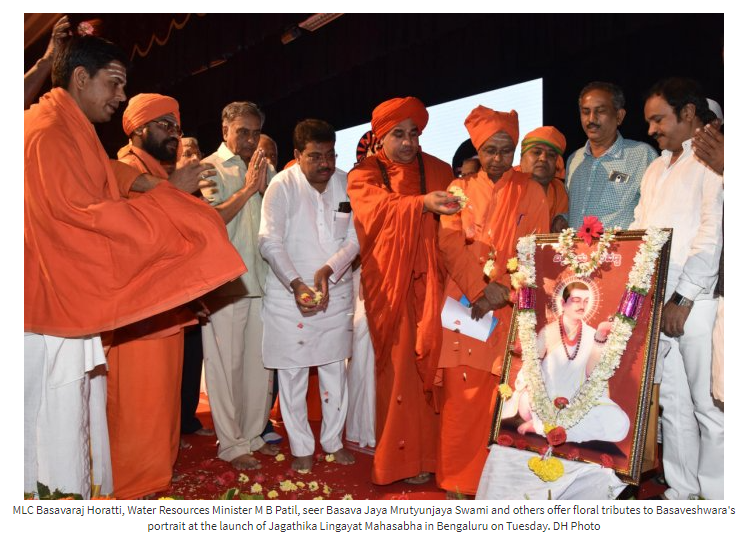
(Photo credit: Deccan Herald. Caption in original)
The Swamiji became a regular fixture at many of the JLM meetings, press conferences, and protests to press for independent religion status. He also took a leading role in advocating for the same in his personal capacity and appeared on many talk shows on Kannada television to explain doctrinal and other matters and often taking on Veerashaiva spokespeople and seers in the process. His support for independent religion status for Lingayats proved to be invaluable as he brought the strength of the Panchamasalis—the largest Lingayat community—to the struggle.
Enter BJP
To say that the Lingayat demand for independent religion status is a troubling issue for the BJP would be an understatement. Despite their historical anti-brahminism, Lingayats comprise the core vote bank of the BJP in Karnataka because of their perceived slight at the hands of the Congress. Having the Lingayats step out of the Hindu fold and reorganise themselves around Basavanna’s philosophy of anti-casteism, is something that the party cannot allow for reasons that should be obvious to the reader. After all, Karnataka is the only southern state where the saffron party has managed to gain power, if only through questionable means. Throwing this away would be suicidal for the party, not only for what it means electorally, but also because of the seismic impact the exodus of Lingayats would have on “Hinduism.”
My argument is that the BJP checked the growing activism for independent religion status among Lingayats by propping up the reservation issue to divert the energies of the community. To be clear, I am not suggesting that the Panchamasali reservation demand is entirely BJP’s creation. Growing economic inequality and joblessness have left their mark on all communities, and the Panchamasalis are no exception. The BJP’s deviousness lies in capitalising on these fears in such a manner that not only has it managed to harness it to undermine reservations as a policy aimed at the uplift of backward castes but has also dealt a serious if not fatal blow to the movement for independent religion status.
In fact, Dr. Jaamdar sounded the alarm in 2020 when he noted that the B.S. Yediyurappa government was working tirelessly to split the community in order to deflate the independent religion struggle. The setting up of the Karnataka Veerashaiva Lingayat Development Board in 2020 with an outlay of Rs. 500 crore,[xxiv]and the assurance to include Panchamasalis in the 2A category were part of these efforts.[xxv]Subsequently, the agitation for 2A status was flagged off in Kudalasangama at a big gathering on January 14,2021, by the Panchamasali legislator from the BJP and Yediyurappa’s bête noire, Basangouda Patil Yatnal, in the presence of Mrutyunjaya Swamiji,[xxvi] The seer set off on a padayatra to Vidhana Soudha—the seat of government—in Bengaluru to press the issue.[xxvii] Its bears mentioning here that this was the time when the government was imposing restrictions on gatherings because of Covid. So, the public gathering and padayatra could not have happened without the government’s tacit support.
Many other developments also contributed to the turn of events. Progressive Lingayat commentators have noted that the RSS, which was unhappy with Yediyurappa, propped up the Panchamasali agitation to undermine the then chief minister who is from the Lingayat Banajiga community, and to decentre the struggle for independent religion status.[xxviii] It is not an accident that Yatnal, who is a known critic of Yediyurappa, has been an active spokesperson for the agitation. Additionally, the setting up of a rival Panchamasali matha in Harihara by another BJP Panchamasali legislator, Murugesh Nirani, and headed by Vachanananda Swamiji, left Mrutyunjaya Swamiji with little option as a rival seer was emerging within the community. The options facing him were clear: continue to be involved with the independent religion struggle and appear to ignore Panchamasalis or take on the leadership of the reservation agitation and appear to represent your community. Sadly, he opted for the latter.
Nonetheless, the cumulative effect of all of this is that Mrutyunjaya Swamiji, who was once at the forefront of the independent religion struggle, is now completely subsumed into the reservation agitation. Not just him, the Panchamasali community finds itself chasing after the 2A quota in a manner that the struggle for independent religion status has taken a backseat. When pressed on a TV show recently about whether he had any regrets about participating in the Lingayat struggle for independent religion, the seer argued that he never suggested that achieving independent status does not mean Lingayats are outside the fold of Hinduism, which he likened to a “way of life” rather than a religion.[xxix] It does not take much to imagine what might have brought about this change in him.
Conclusion
The point of this essay has been to show how the BJP and its allied organisations have unleashed forces which will eventually intensify the attack on reservation as a policy committed to the uplift of primarily lowered caste groups. At the same time and in the case of Lingayats, the party has also strategically wielded it to divert the community from the struggle for independent religion statusby dangling reservation instead. This way, it has managed to kill the proverbial two birds with one stone.
It is sad that the Panchamasalis have traded a struggle that sought to bring them dignity with one that will likely turn into a losing battle. After all, members of the 102 communities (including myself) in 2A will not be silent if the government decides to include a dominant community such as the Panchamasalis in the category. Additionally, the move to evolve new categories by the BJP, which already seems to be an empty promise, has been challenged in courts and will likely not see the light of day anytime soon. Even if Panchamasalis do see their reservation increased by some miracle, it will likely be a pyrrhic victory at best as intensifying privatisation coupled with systematic dismantling of reservation itself renders it moot. More tragically, an opportunity to embrace the core tenets of Basava’s philosophy and strike a lethal blow at caste/ism seems lost for now.
~
Notes
[i] I borrow this phrase from a story narrated by my grandmother whose gist went something along the lines of not to look for sand when one is at the seashore but to seek out pearls. I invoke it here as it captures the poor bargain that Panchamasali Lingayats have struck by substituting the struggle for independent religion with clamour for enhanced reservation.
[ii]https://thesouthfirst.com/karnataka/reservation-shuffle-panchamasali-sect-opposes-new-2d-category-announced-for-it/
[iii]https://www.thenewsminute.com/article/dalit-convention-bengaluru-pushes-internal-reservation-scsts-170681
[iv]This seems to be a misleading assurance as the 103rd amendment to the Constitution, which provided for reservation for EWS, clearly states that communities represented in other categories cannot avail themselves of EWS quota.
[v]https://www.deccanherald.com/state/top-karnataka-stories/ews-quota-to-vokkaligas-lingayats-brahmin-body-opposes-govt-plan-1178276.html
[vi] See https://www.deccanherald.com/state/dh-deciphers-what-operation-713124.html
[vii] I use “lowered” instead of lower castes to denaturalize oppression and to draw attention to how caste as a structure keeps certain groups excluded from social power. See Mani, B. R. (2007). Debrahmanising history: Dominance and resistance in Indian society. Manohar.
[viii] I use struggle for independent religion status instead of minority religion status, which is also used by some in the Lingayat community. My own interest and investment in this struggle, as is that of many progressive Lingayats, is to come out of Hinduism and its caste structure and not about the benefits that one accrues from minority religion status.
[ix] See S.M. Jaamdar (2021).Mysore Veerashaiva agitation of 1890s and its long term repercussions on the Lingayat community. Jagathika Lingayat Mahasabha.
[x] See William McCormack (1963). Lingayats as a sect. The Journal of the Royal Anthropological Institute of Great Britain and Ireland, 93(1), 59-71.
[xi] See Vijay Boratti (2022). Lingayat assertions of identity in colonial Karnataka: Caste, census and politics of representation. South Asia Research, 42(3), 398-413.
[xii] See S.M. Jaamdar (2021).
[xiii] For a copy of the report, see https://www.roundtableindia.co.in/miller-committee-report-1919/
[xiv] See P. Radhakrishnan. Karnataka backward classes. Economic and Political Weekly, 1749-1754.
[xv]https://www.thenewsminute.com/article/why-karnataka-s-caste-census-report-still-secret-inside-story-154388
[xvi]https://theprint.in/politics/who-are-panchamasali-lingayats-why-theyre-so-important-in-karnataka-politics/1278958/
[xvii]https://www.youtube.com/watch?v=42yPrUojQ7c
[xviii]Currently, 30 lowered rung Lingayat groups, including my community, are housed in the Centre’s OBC list. It does not include dominant Lingayat groups, including Panchamasalis
[xix]https://www.deccanherald.com/state/top-karnataka-stories/karnataka-cm-b-s-yediyurappas-master-plan-central-obc-status-for-veerashaiva-lingayats-920302.html
[xx]Unlike brahminical monastic orders that primarily obsessed over spiritual matters until the rise of Hindutva, Lingayat maths or monasteries have historically taken a keen interest in the social life of the community and often to mixed effect. Historian Janaki Nair notes that the widely used Kannada term “mane-matha”which captures belonging, is a testament to the prominent role that the matha played in the life of the community as it mediated access to education, political representation, etc. As such, mathas continue to play a leading role in Lingayat struggles. See Nair: https://thefederal.com/opinion/lingayat-mathas-agents-of-change-or-alternative-power-centres/
[xxi]https://timesofindia.indiatimes.com/city/bengaluru/now-memo-exposes-bsys-doublespeak-on-lingayats/articleshow/59816812.cms
[xxii]See this interview in Kannada with Veerasomeshwara Jagadguru, seer of Balehonnur, which is one of the Veerashaiva Panchapeethas. He maintains that Veerashaiva-Lingayat is a branch of Shaivism even as he insists that if a new religion were to come into existence, it should be called Veerashaiva-Lingayat rather than Lingayat. https://www.youtube.com/watch?v=6SXPZQYvBAU
[xxiii]https://www.deccanherald.com/content/655571/jagathika-lingayat-mahasabha-launched-horatti.html
[xxiv]https://www.indiatoday.in/india/story/karnataka-allots-rs-500-crore-to-veerashaiva-lingayat-board-1743658-2020-11-24
[xxv]https://www.basavamarga.com/s-m-jamdar-paper-state-ment/
[xxvi]https://www.basavamarga.com/satyampet-91/
[xxvii]https://www.youtube.com/watch?v=ip7ISrlbkIE
[xxviii]https://www.basavamarga.com/satyampet-91/
[xxix]https://www.youtube.com/watch?v=P6skTMNnhQ4
~~~
Redant was born and raised in Bengaluru and currently works in the U.S. His interest broadly revolves around questions pertaining to Kannada identity construction and caste/ism with a specific focus on the intersections between Dalit and Lingayat worlds. He discovered Babasaheb and Basavanna belatedly, but he is glad that they are in his life as they have changed how he understands the world. He hopes to do whatever he can to contribute to the fight against caste/ism even as he learns more about its pervasiveness every day.

